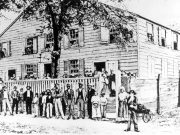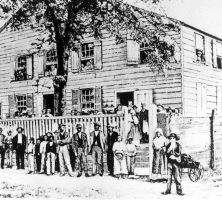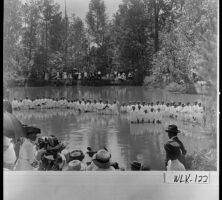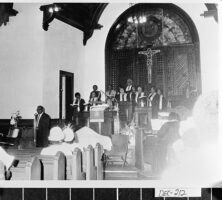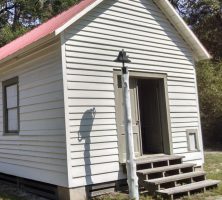Baptists have been the largest African American religious group in Georgia since the late eighteenth century. Baptist churches have made vital contributions to the identity of Black people in the state by shaping behavior and belief, serving as centers of community life, and creating independent spaces free from the control of white society.
History
Traveling preachers first brought the Baptist message into Georgia during the American Revolution (1775-83). Baptists (along with Methodists) proclaimed an intensely individualistic, emotional Christian message that called for a decisive, unambiguous conversion experience as the hallmark of a genuine Christian life. The evangelical message found a receptive audience among a wide variety of hearers, including enslaved and free people in the Georgia colony.
The message brought with it a radicalism disturbing to defenders of the status quo: in Baptist gatherings African Americans and whites worshipped together in seeming disregard for social norms. At times white Baptists would listen to the preaching of a Black Baptist who felt a divine “call” to preach. The radicalism proved short-lived, however. As the Baptist message attracted more converts in the post-Revolutionary generation, Baptist leaders embraced existing societal conventions. Baptist churches came to resemble more traditional, hierarchical churches, with galleries in the back for enslaved churchgoers—and a religious message teaching social deference.
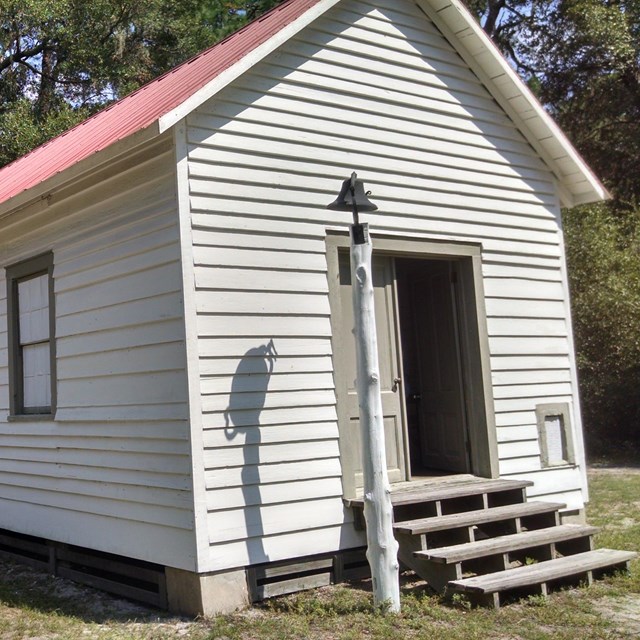
Many Black Baptists lived within this context until Reconstruction, following the Civil War (1861-65). In a few of the state’s larger towns, however, Black Baptists established independent congregations and functioned without white supervision. Both dating to the 1770s, Savannah’s First African Baptist Church, founded by Black Baptist leaders George Liele and Andrew Bryan, and Augusta’s Springfield Baptist Church maintained autonomous status during the era of slavery. Additionally, large but unknown numbers of Black Baptists worshipped in secret meetings of their own, in slave quarters or in other central locations. Black Baptists enjoyed their greatest freedom of worship during these clandestine gatherings, voicing their distinct travails in original songs (later called “spirituals”) and listening to preachers who shaped a Black Baptist vision of judgment and eschatological hope.
During Reconstruction, Black Baptists throughout the state left white churches and openly organized their once-secret gatherings, forming thousands of independent churches. Countless Black Baptist churches were established in the early 1870s. These communities proved a lasting effect of emancipation. As hopes for substantial political power, equitable economic practices, and social equality faded during the late nineteenth century, the church—as one of the few autonomous Black institutions—came to occupy a distinctly powerful position. The church not only shaped adherents’ views of life and morality (as it also did for the state’s huge numbers of white Baptists) but also became a place for political organization, artistic expression, social services, and more. This comprehensive role, established in the late nineteenth century, characterized Black Baptist churches throughout the twentieth century.
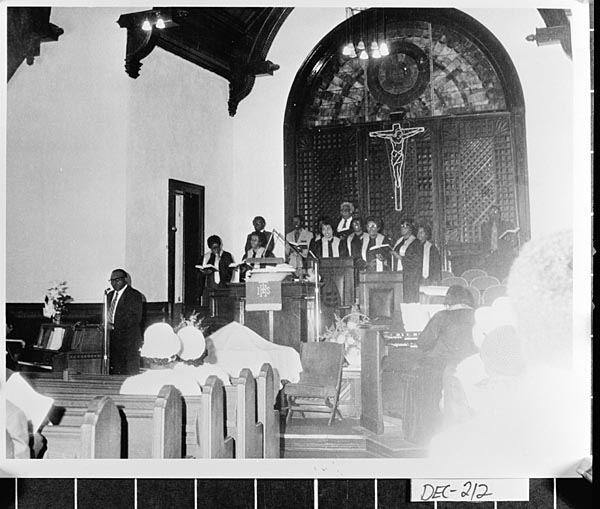
Black Baptists played a conspicuous role in the civil rights movement. Baptist ministers were the main force organizing the Atlanta-based Southern Christian Leadership Conference, which Martin Luther King Jr. led for eleven years. Baptist churches throughout the state hosted mass meetings and were sometimes targets of violence by white segregationists. Countless numbers of Black Baptists staged sit-ins, marched in protests, and canvassed to galvanize voter registration. They gave the movement a distinct religious cast, as spirituals, sermons, and the practice of nonviolence blended into radical activism and protest.
Beliefs and Practices
Black Baptists, like the state’s numerous white Baptists, are thoroughgoing Protestants. The sermon is the centerpiece of the worship service, and the minister’s central task is to preach the Word, or Gospel message of Jesus Christ, which calls for a distinctly individual, inward response. In keeping with this requirement, Baptist churches receive an individual member only when that person has made a commitment of faith in his or her own right. The ritual of baptism, whether in a church font or in a body of water, is the critical outward marker of the new believer’s entry into membership in the church. Also, in keeping with the inward focus, Baptist churches are typically unadorned, and the worship service has none of the liturgy found in Catholic or Episcopal churches.
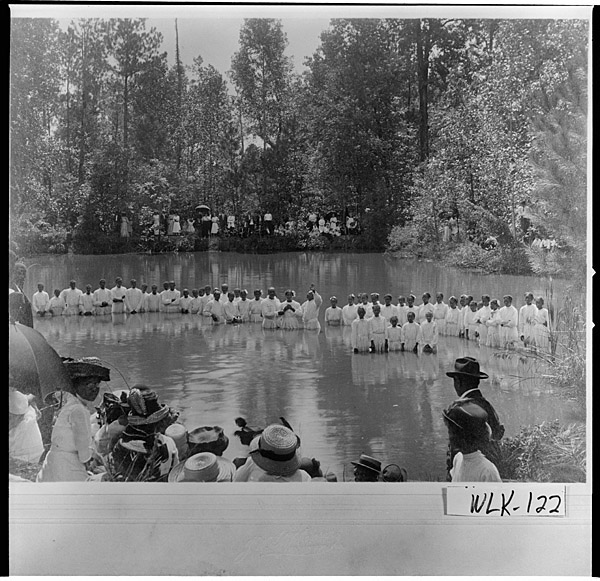
Black Baptists share these practices with white Baptists, though the churches are institutionally separate. Thousands of Black Baptist churches joined together in 1895 to form the National Baptist Convention of the USA (NBC). A 1915 debate over denominational management split the convention into two groups, NBC of America and NBC of the USA. Several churches left the latter group in 1961 over tenure debates and divided views of civil rights and formed the Progressive National Baptist Convention. Approximate national membership of the three denominations is 5 million (NBC of the USA), 3.5 million (NBC of America), and 2.5 million (Progressive). Georgia’s smaller number of Primitive Baptist churches are allied with the National Primitive Baptist Convention, organized in 1907. It has approximately 600,000 national members.
Certain elements of Black Baptist life are unique to the African American experience. Scholars have described these elements as African “survivals,” or fragments of African religion that have remained, though in a different context. The music of Black Baptist churches contains cadences and rhythms of distinctly African origin, and the Black Baptist understanding of baptism as entry into the community can be traced to certain African rituals. The engagement of the churches in matters of politics and social justice can also be seen as a survival of the African religious view in which all life is sacred. Thus, in contrast to many white Baptists who have insisted on separating “church and state,” Black Baptists have heralded emancipation as the “Day of Jubilee,” planned protests and taught citizenship classes in their churches, and invoked religious imagery to give social activism a higher meaning, as exemplified in King’s sermon “I’ve Been to the Mountaintop” or in the songs of the Student Nonviolent Coordinating Committee’s Freedom Singers.


